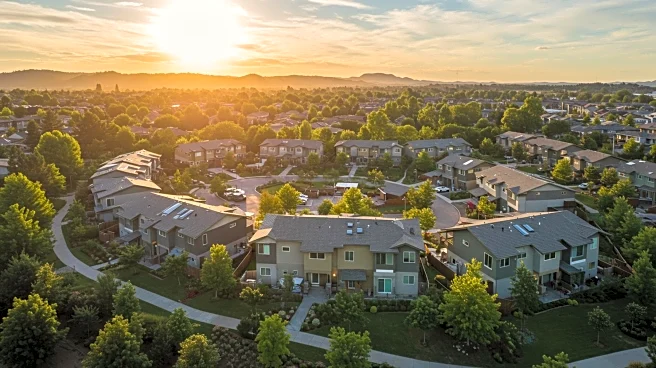What is the story about?
What's Happening?
San José has completed the first accessory dwelling unit (ADU) condominium in California that can be sold separately from the main house. This development follows the city's adoption of laws allowing such sales, marking a significant shift in housing policy. Mayor Matt Mahan expressed optimism that other cities in California might adopt similar measures, highlighting the affordability and accessibility of ADUs as a form of home ownership. The city has seen a doubling of ADU construction permits over the past five years, with 1,500 units permitted since 2022. City Manager Jennifer Maguire emphasized the importance of this initiative in providing more housing opportunities for the community.
Why It's Important?
The introduction of for-sale ADUs in San José could significantly impact California's housing market by offering a more affordable entry point for home ownership. As housing prices continue to rise, ADUs present a viable solution to the state's housing crisis, potentially serving as starter homes for many residents. While ADUs have contributed to about one-fifth of the state's housing growth, experts remain cautious about their overall impact on the housing shortage. Nevertheless, this initiative could inspire other cities to explore similar policies, potentially leading to broader changes in housing availability and affordability across the state.
What's Next?
Other cities in California may consider adopting similar laws to allow the sale of ADUs separately from main houses, potentially leading to increased housing options statewide. The success of San José's initiative could serve as a model for other municipalities, encouraging them to explore innovative housing solutions. Stakeholders, including city officials and housing advocates, will likely monitor the impact of this development on the local housing market and assess its potential for broader application.
Beyond the Headlines
The move towards for-sale ADUs raises questions about urban planning and zoning regulations, as cities must balance the need for affordable housing with community concerns about density and infrastructure. This development could also influence cultural perceptions of home ownership, shifting the focus from traditional single-family homes to more flexible living arrangements. Long-term, the success of this initiative could lead to changes in housing policy and development strategies across the country.
AI Generated Content
Do you find this article useful?












